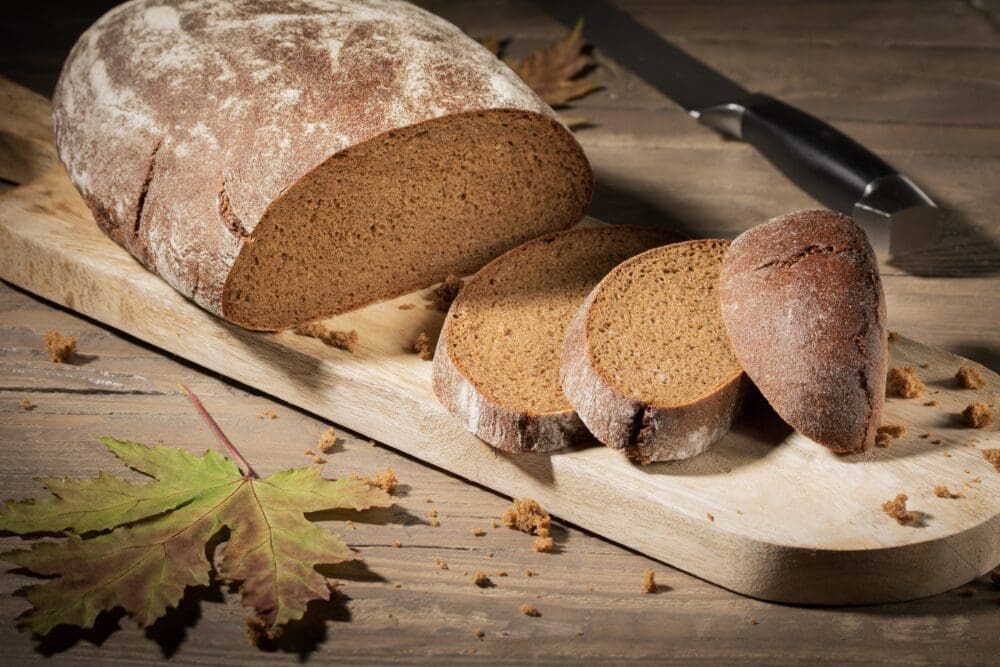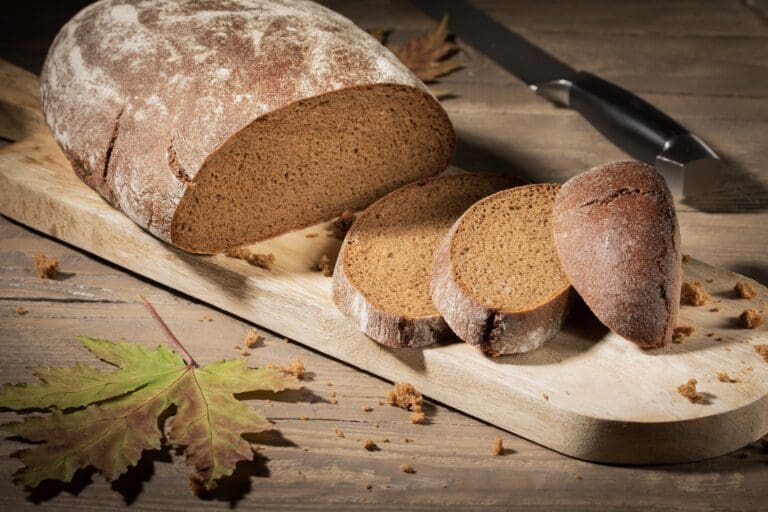Have you ever heard of Peasant bread and wondered what it’s like? Peasant bread (called Pane Rustica in Italy) has roots in Europe. The foundation is usually whole wheat or rye flour. This creates a slightly stiff bread with a satisfying crust. And while you can fancy it up, Peasant bread is revered for its simplicity.
By the way, just because it’s called Peasant bread doesn’t mean “lower” classes only ate it; all classes likely enjoyed them. Cooks appreciated being able to set up various stages and move on to other tasks until the bread is ready for another part of the process.
This recipe requires a deep, oven-proof skillet or soup pot with a lid.

Peasant Bread
Have you ever heard of Peasant bread and wondered what it’s like? Peasant bread (called Pane Rustica in Italy) has roots in Europe. The foundation is usually whole wheat or rye flour. This creates a slightly stiff bread with a satisfying crust. And while you can fancy it up, Peasant bread is revered for its simplicity.By the way, just because it’s called Peasant bread doesn’t mean “lower” classes only ate it; all classes likely enjoyed them. Cooks appreciated being able to set up various stages and move on to other tasks until the bread is ready for another part of the process.This recipe requires a deep, oven-proof skillet or soup pot with a lid.
Ingredients
- 2 ½ cups bread flour
- ½ cup whole wheat flour
- 2 tbsp honey
- ½ tsp dry yeast
- ¼ cup warm wate
- 1 ½ tsp salt
- 1 ¼ cup warm water (100F)
- Extra flour on hand
Instructions
- Mix the yeast, warm water (NOT hot), and honey together
- Set aside for 15 minutes
- In the meanwhile, mix both flours with salt in a large bowl.
- Pour the yeast mixture into the flour and the 1 ¼ cups of warm water.
- Dust your hands with a bit of flour, then mix everything together by hand (it will be sticky)
- Wrap this in plastic wrap
- Refrigerate overnight
- Remove the bread first thing in the morning
- Unwrap the dough and put it into a bowl
- Cover it with a clean kitchen towel and leave it to rise for 18 hours at room temperature.
- Dust the surface of a cutting board with flour
- Put the dough on top, sprinkling the top of the bread with a little more flour.
- You’re going to knead in halves. Fold the sides into the middle. Fold the top and bottom into the center (you’ve made a square)
- Line a cookie or baking sheet with parchment.
- Dust the surface with flour
- Move the dough onto the sheet with the seam-side down
- Sprinkle the top with more flour
- Cover again with the kitchen towel, resting for 3 hours
- Position a wrack at the bottom of the oven; preheat to 450F
- Line your deep skillet with parchment paper (yep, dust it)
- Put in your dough (uncovered), and place it in the oven for about ½ hour. Your watching for the dough to double
- Remove the skillet to the stovetop
- Carefully lift the parchment
- Invert the dough back into the skillet. Cover
- Bake for 30 minutes; uncover
- Bake 15 more minutes until the crust is lightly brown
- Remove and place on a cooling rack
- Enjoy





